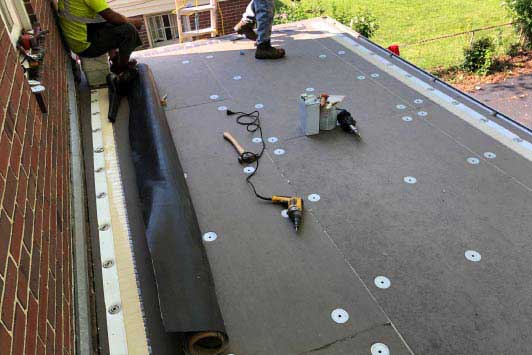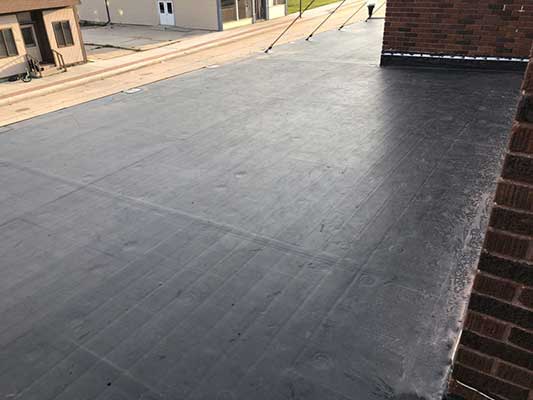Low Slope
Low Slope
What Is A Low-Slope Roof?
A flat roof or low slope roof is one that is virtually flat or little sloped. No roof should be completely level since it must have a small slope to drain properly.
Roof slope, or the inclination of a roof, is described by phrases like low-slope and steep-slope.
A roof with a slope of less than 3-in-12 is considered low-slope.
This means that the ceiling level rises less than 3 inches vertically for every horizontal foot.


A steep-slope roof (usually a shingle roof) relies on gravity to guide water in one general direction, allowing it to “shed” the water over the shingles’ cracks and fasteners until it reaches the edge. Because water cannot flow in any specific direction on a low-sloped or flat roof, it must form a watertight, monolithic membrane that remains watertight all the way to the drains or edge.
A continuous membrane covering is commonly used on modern low-slope or flat roofs to better resist pools of standing water. These membranes are applied as continuous sheets that are heat-welded or adhered together. Sealed metal roofs made of copper or tin are a more expensive low-slope or flat roof choice. These are metal panel interlocking systems that are soldered together.


Built-up (“tar and gravel”) roofing has traditionally been used on low-slope or flat roofs, but today’s performance, economic, and environmental issues necessitate better value alternatives.
A low-slope/flat roof must not only endure wind, freeze-thaw cycles, and UV radiation from the sun, but it must also withstand expansion and contraction and be completely watertight. To satisfy these performance requirements, well-engineered attachment, seaming, and weathering properties are required.